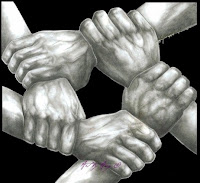 In the section of “Going Against the Grain” entitled The Right to Life, Liberty, and the Pursuit of Happiness, Jaqueline Royster discusses activism in African American communities. Whether large or small, she believes that these acts have formed our fabric of resistance, which is the phrase the she uses to symbolize the ways in which people of African descent have continuously come together to fight for equality and against injustice. She references examples such as revolts against dehumanizing conditions, particularly during slavery, when people were stripped of freedom, educational opportunities, and mere rights that whites were given.
In the section of “Going Against the Grain” entitled The Right to Life, Liberty, and the Pursuit of Happiness, Jaqueline Royster discusses activism in African American communities. Whether large or small, she believes that these acts have formed our fabric of resistance, which is the phrase the she uses to symbolize the ways in which people of African descent have continuously come together to fight for equality and against injustice. She references examples such as revolts against dehumanizing conditions, particularly during slavery, when people were stripped of freedom, educational opportunities, and mere rights that whites were given.Royster acknowledges that the founding fathers of our nation attributed the right to life, liberty, and the pursuit of happiness to select people, which was obvious because of the oppression that occurred. Her account goes on to discuss the Age of Enlightenment to explain how the three rights above came into existence.
The idea of coming together that our ancestors embodied made me reflect on where we are today as a culture. We still need to come together because the race is not over. Our fabric of resistance in the past was the springboard for the acquisition of many rights such as gaining the right to vote and ending the Jim Crow era. Royster even discusses the founding of schools as early as 1793, which was done by Catherine Williams Ferguson, a former slave. Ferguson resisted the belief that blacks should not be educated. She went against the grain and strengthened our fabric.
This entire historical account delves into ideas that really make you wonder. I think that I found fascination in the fact that our ancestors understood what needed to be done and worked toward accomplishing it. They were neither passive nor complacent, but vigilant and determined. Society can learn from this now.
-Berkley
-Berkley
No comments:
Post a Comment